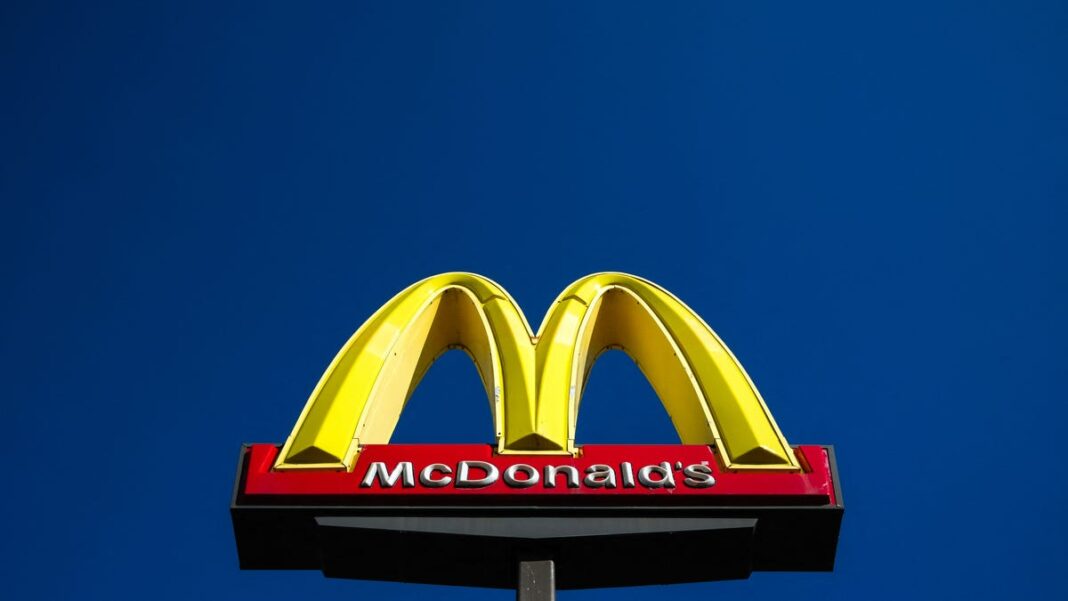McDonald’s E. coli outbreak causes 75 illnesses. What are the risks?
Many individuals across 13 states have fallen ill after consuming McDonald’s Quarter Pounders tainted with E. coli.
According to the Centers for Disease Control and Prevention (CDC), at least 75 cases of E. coli sickness have been reported, and there has been one death in Colorado linked to the O157:H7 variant of the bacteria. McDonald’s has pointed to slivered onions as the source of the problem, with the Food and Drug Administration (FDA) also suggesting that the onions may be responsible for the outbreak.
What is the status of the investigation?
Federal authorities are currently investigating whether the source of the outbreak is slivered onions or beef patties from the Quarter Pounder sandwiches, according to the CDC.
The CDC reported that, from the data gathered for 61 of the 75 affected individuals, 22 required hospitalization, and two developed severe conditions that could lead to kidney failure. Cases began appearing in late September and persisted until October 10.
Of the 42 individuals who were interviewed, all confirmed having eaten at McDonald’s, with 39 stating they consumed a beef hamburger. Out of the 36 who could remember the specific burger they had, 31 identified it as a Quarter Pounder.
This week, McDonald’s has removed Quarter Pounders and slivered onions from menus in certain areas. Taylor Farms, the supplier of the slivered onions, has issued a recall for any yellow onions that may have been sent to specific McDonald’s locations affected by the outbreak, as noted by the CDC.
In a statement, Taylor Farms mentioned they “proactively” recalled yellow onions from their Colorado facility that had been distributed to select foodservice customers.
“We are collaborating with the CDC and FDA during their investigation into the outbreak’s source,” the statement added. “All Taylor Farms products currently available are safe for consumption.”
E. coli outbreaks are not uncommon in the United States, often finding their way into the food supply through frozen products and fresh vegetables, according to the University of California, Davis, Health.
Here are some essential facts about E. coli:
What is E. coli?
Escherichia coli, commonly referred to as E. coli, is a type of bacteria present in food, water, and the intestines of humans and animals, where it is usually harmless, according to the CDC.
There are various strains of E. coli, and while some can lead to illness, others are benign.
How do people become infected with E. coli?
According to the CDC, people can contract E. coli through contaminated food or drink. Infection can also occur from contact with infected animals or their excrement, as well as with contaminated environments or surfaces.
The Shiga toxin type of infection is frequently spread through contaminated foods, especially leafy greens and ground beef, along with unsafe water sources, as noted by the CDC. Contact with infected livestock, particularly cattle, or fecal matter from a person infected with E. coli are also possible sources.
High-income countries see a higher incidence of illness related to this bacteria. The Cleveland Clinic estimates that the U.S. reports around 265,000 cases of Shiga toxin-producing E. coli infections annually, making it the leading cause of outbreaks and infections.
What are common symptoms after E. coli exposure?
The CDC indicated that most individuals infected with the Shiga toxin-producing type of E. coli linked to the recent McDonald’s outbreak experience severe stomach pain, diarrhea—often bloody—and vomiting. In some cases, serious kidney issues may develop, necessitating hospitalization.
Symptoms generally manifest three to four days after consuming contaminated food or beverages.
How to prevent E. coli infections?
The FDA advises anyone who has dined at McDonald’s and is experiencing symptoms to consult their healthcare providers.
To reduce the risk of foodborne illnesses, the FDA encourages maintaining sanitary practices at home. This includes washing hands with warm, soapy water before and after handling raw food or touching potentially contaminated items like diapers or cleaning surfaces.
The agency also suggests cleaning items that have contacted raw food, like refrigerator interiors and cutting boards, which can be sanitized using a tablespoon of bleach in a gallon of hot water, followed by drying with a clean cloth or paper towel.
Immediate cleanup of spills in the refrigerator is advised. For pet owners, it’s crucial to prevent cross-contamination when preparing food for pets and to wash hands after handling animals.
Cooking meat thoroughly to an internal temperature of 160 degrees Fahrenheit and avoiding raw milk or other unpasteurized products are also recommended.
(This story has been updated with the latest information.)

